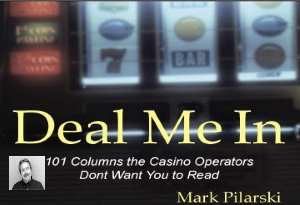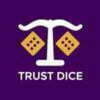I would like to know what the meaning is of the picture on a joker from a deck of cards. The joker has his finger on his nose in a conspiratorial manner. Any information on the joker would be appreciated. George K.
According to my go-to Guy on such trivial twaddle, Blackjack (who knows everything about anything, SQUARED), paper money and illustrated cards appeared at about the same time historically (around 900 AD, in China and Korea) and may originally have been one and the same.
Cards were used first for divination and later for gambling. Playing cards were common in the Orient and in Arabic lands before they were known in Europe, where they may have arrived in the pockets of warriors returning from the Crusades. Certainly, they were well known in Europe by the end of the 1300s. (Neither Dante nor Chaucer mentions playing cards-possibly an indication that they were unknown to Europeans in the 1200s, and unknown in England as late as the middle 1300s.)
The cards brought in from oriental sources were divided into suits and numbered but had no pictures. Cards with pictures on them were first made in Italy and were used in fortune telling as well as gaming. They were the Tarot cards. There were 22 of them, of which 21 had numbers and represented vices and virtues, forces of nature, etc., and one (le mat or il matto), which had no number but the image of the fool. That card was the precursor of the joker. It was supposed to resemble the court jester or fool and was drawn with odd simpering expressions and curious postures in imitation of the typical court’s fool-a-well-established figure in those days.
In the European courts of the Middle Ages, mentally and physically deformed people, dwarfs, albinos, and idiots were considered to be very amusing and were dressed up in special outfits with bells and funny hats and mismatched britches, etc. and given great liberty to sass the king and pass wind at will. Some perfectly sane and highly intelligent men on occasion acted the fool so as to get into that favored position and there practice their art at satiric poetry and ribald plays free of any punishment or disfavor. There was also for a long time a traditional Middle Ages Feast of Fools, a raunchy celebration something like the Saturnalia, held at the time of the Feast of the Circumcision (not my idea of a particularly enticing feast) and devoted more and more to a travesty of the rituals of the Church.
The church at first (late 1300s) condoned cards and favored those with religious themes printed on their backs. Cardinal Mazarin taught young Louis XIV his history, geography, and other courses with cards having educational inscriptions on their backs. They show up in the household accounts of Charles VI of France in 1392.
The church took a dimmer view of the matter when card gaming for money got more widespread, and by the time of our Puritan Pilgrims, playing cards were a definite no-no, “the devil’s picture book.”
Gridwork designs on the backs of cards did not occur until 1850, players having had suspicions about possible card-marking made easier by the designs.
Double-headed cards with corner indices, originating in France in the early 19th century, became standard about 1870 in the U.S.
The appearances of the court cards have not changed much since the reign of Henry VIII of England, but are still shown with the royal court costume of that time. The cap and bells of the usual joker were modeled on the clothes of the guy who gallantly amused Henry’s wives prior to their beheadings.
A Mississippi riverboat gambler claimed to have devised the joker in the mid-19th century to increase the odds of getting good poker hands. But his claim seems a trifle overstuffed, since the fool, the court jester, or the joker has been a member in good standing of the playing card community since the Tarot cards of the 1300s.
The joker wielded its face in the U.S.A in the 1860s-its name deriving from the Alsatian word “Juker” (or more commonly euchre) meaning Jack-the whole shebang coming ultimately from a game played in Alsace (a European region that is sometimes part of France, sometimes part of Germany) called “Bauer” (German for farmer) in which two of the Jacks were named “Rechts Bauer” and “Links Bauer” (which words were corrupted into English as Right Bower and Left Bower) and were accompanied by another Jack called, in English, Best Bower.
I hope, George, you got a kick out of this show of imaginative-if forgettable-historical virtuosity.
Gambling thought of the week: “He’s an honest man. You could shoot craps with him over the phone.” -Earl Wilson




















